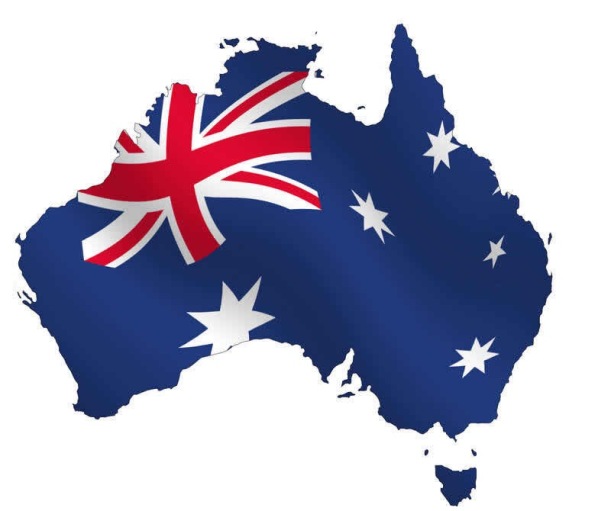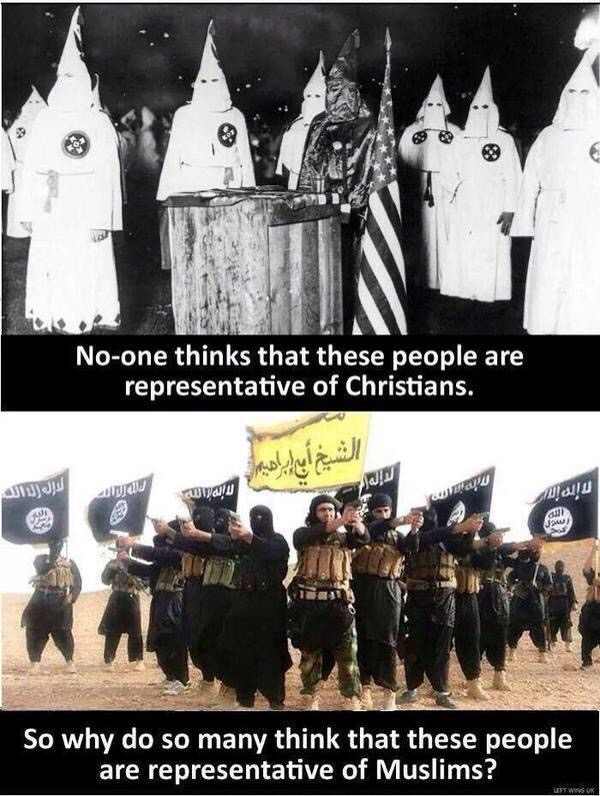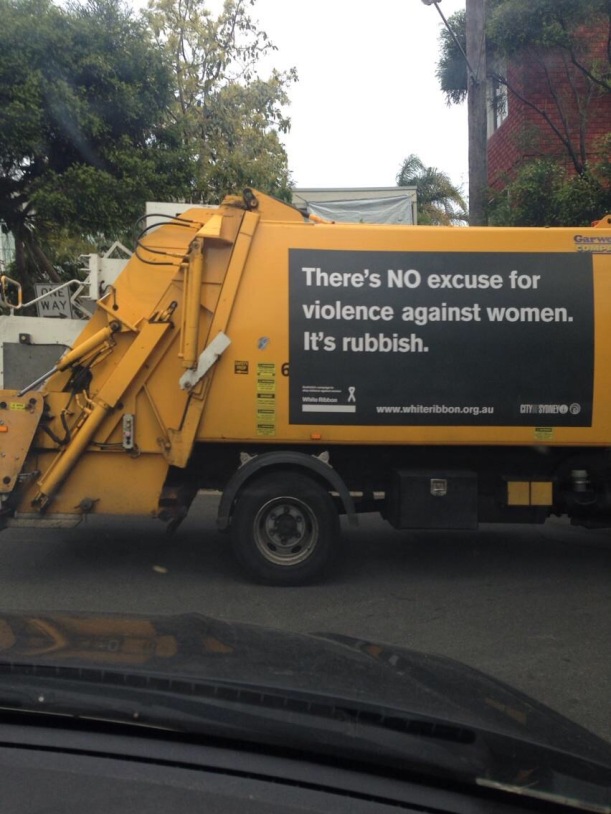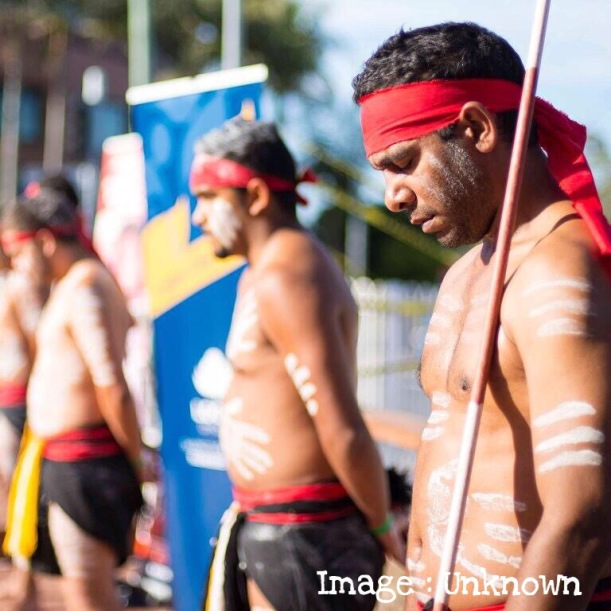Survey link https://www.surveymonkey.com/s/P9RSBGN
Monthly Archives: October 2014
“When indigenous (sic) is a disclaimer not a qualifier” an example. Happenings in Broome.
Sent to me via email copied from Broome Community Notice Board. “Community Meeting tomorrow night”
The original post from *Xxxxx that kicked this meeting of
I am indigenous, and I am here to say I am sick and tired of reading some of the drivel that comes out every time someone complains about unacceptable behaviour in this town. People regularly bitch and moan about dog owners letting their dogs poop on the beach, we have whinges about backpackers washing their clothes and their body parts in public facilities, and of course there’s humbugging at Coles and the recent brawling in Anne Street.
What I am most sick and tired of is that any time someone complains about unacceptable behaviour from indigenous people, it is immediately branded a racist attack by some indigenous people. I am appalled that some of the responses from my indigenous brothers and sisters to the Anne Street brawl includes not only justifications for punching on in the street, but attempts to minimise the seriousness of these events and the damage this causes to kids watching by saying “well, it’s been happening for years!”
Yes, we know it’s been happening for years. Does that make it acceptable? Does that mean that nobody is allowed to stand up and say “this is feral behaviour?” Does this mean that anyone who says it is unacceptable is a racist just because the individuals involved happen to be indigenous?
If a group of any other race, colour or creed started doing the same, they would be justifiably condemned by the public, who are entitled to be going about their lawful business driving down a street without being confronted by a big group of brawlers and onlookers fighting, screaming, and smashing glass on the street.
Some of the people who have commented here say it needs more funding, it needs more leadership, it needs more understanding of trans-generational trauma, and that may well be true. But what it DOES NOT need, is the constant making of excuses for what is simply anti-social behaviour.
Every single time you blame something like trans-generational trauma, or social disadvantage, or the cops, or the white invaders, instead of the individual in front of you who is drunk, off his head and wanting to punch on in the street, you condemn that person to a life of low expectations and mediocrity. Every time you say, well, that’s just the way we are, you condemn generations of indigenous kids who are full of potential to never achieving theirs.
Every time you come to the defence of your countrymen because somebody complains about the behaviour of some individuals who happen to be indigenous, instead of actually looking at why the behaviour is unacceptable, you just keep the myth going that black people are incapable of being better than that.
Every time you spread the idea, directly or subliminally, that it’s ok to be anti-social and under-achieve at everything because there is a whole raft of other things to blame that are beyond your control, you create another victim. The poor-bugger-me syndrome. It’s time to put it to bed and demand a higher standard for all of us, and that can only come from within.
We ARE better than that, we know we are better than that, why don’t we demand that everybody acts like they are?
_______________________
From *XXXXX XXXX
Hi everyone,
I’m looking forward to meeting a lot of new faces and getting some good ideas thrashed out.
Please have a read through this before you come along, print it out and bring it if you can.
Notes and Agenda for informal meeting of interested parties – Broome Fishing Club – 29 October (6pm start)
Although being held as an informal meeting, there are some things I want to achieve as a result. To aim for anything less means it is nothing more than another talk fest.
- Opening – *XXXXX XXXX
- All attendees invited to share their thoughts on something concrete they would like to achieve to bring about change in Broome.
- Discussion centred around the thoughts shared, with a view to narrowing them down to
- A short list of problems and/or issues needing to be addressed in Broome
- Realistic assessment of whether they can be achieved
- If so, how do we go about it?
- Formation of a committee to drive the necessary actions to address the issues.
My preliminary thoughts about things to discuss include the following:
- Itinerant drunks and troublemakers in Chinatown
- How do we make service providers, govt agencies and Aboriginal corporations more accountable for actually delivering services to the people that need them (I will expand on this more on the night, but it comes in the light of what is happening at Kennedy Hill, One Mile and elsewhere.)
- Drug and alcohol issues, can we address problems for addicts, with suppliers/dealers etc?
- Is there a place for things like a basics card, alcohol free house declarations, alcohol restrictions of some sort. Bring your ideas.
*De-identified
I’m glad @3ree6ixty showed up on my Twitter feed. Preach.
“I used to use homophobic slurs all the time in battle rap, in everyday talking to my mates and stuff like that. And I was young. I was very ignorant, you know, and then I got interviewed by a gay man and he said to me, ‘do you understand your power with kids and how much influence you have on these kids? You’re saying a word like faggot and it teaches them that it’s okay’. And then – ever since then it just changed me. I think the only way you can beat ignorance is with education and ever since then I have – I’ve realised the position that I was in and I wanted to – I was like a role model for young kids, so I want to be a positive one, you know. I don’t want to be a negative one. So that just changed everything for me after that. You know, I realised I was ignorant. I realised that was stupid, but I grew up and moved on.”
Website : http://www.360music.com.au
There’s also this from his facebook page.
Preach indeed.
The Best Anti-Domestic Violence Poster I’ve Seen HT @WhiteRibbonAust
[Survey] Exploring Indigenous Masculinity in Australia – For Indigenous Australians Males Only
Exploring Indigenous Masculinity in Australia – For Indigenous Australians Males Only.
I am an Indigenous Male and this is a preliminary survey that will assist me with constructing a presentation on Indigenous Masculinity that I will be giving in 2015.
All answers are anonymous. Your contribution is voluntary. This is insider research.
Please take this survey https://www.surveymonkey.com/s/8H3V7S7
#SuicidePrevention My meeting with @GerryGeorgatos as he spent time across the Kimberely to engage and to preliminarily listen to what people had to say.
An excerpt from “Kimberley suicide rate, one of the world’s highest – Yiriman is the way to go” by Gerry Georgatos
LGBTI
I met with Broome-based LGBTI advocate, Dameyon Bonson. Mr Bonson is a well-respected researcher and consultant in the field of LGBTI. LGBTI First Peoples face various pressures that can only be relieved by public discussions. Mr Bonson said that in general, 3 to 4 per cent of any population identifies as LGBTI, and therefore it is likely that 3 to 4 per cent of First Peoples identify as LGBTI.
Determining the size of the Aboriginal and Torres Strait Islander lesbian, gay, bisexual, and transgender population is difficult. However, recent studies by Gates and Newport (2012) in the United States estimated the percentage of Americans who identify as LGBTI at approximately 3.4 per cent.
According to the ABS, “Within the Aboriginal and Torres Strait Islander population there were an estimated 294,000 children and young people, representing 4.2 per cent of the total Australian population aged 0 to 24 years.” Mr Bonson said that in using the American figure of 3.4 per cent, there are approximately 10,000 First Peoples who are LGTBI “and whose needs are yet to be identified.”
“They cannot be forgotten.”
Mr Bonson suggested that Aboriginal and Torres Strait Islanders who are LGTBI “are at four times the risk of suicide than Indigenous Australians whom are not LGTBI, whose suicide risk is already higher than the general Australian population.”
“LGBTI people have the highest rates of suicidality of any population in Australia (LGBTI Health 2013), and my placing this overall data in the context of suicide makes a compelling argument that a response is required. Conversely, for Indigenous Australians the rate of suicide is ‘more than 4.2 per cent, or one in every 24 Aboriginal or Torres Strait Islanders (The National Aboriginal and Torres Strait Islander Suicide Prevention Strategy 2013).”
“Health promotional programs for Indigenous, particularly those that are Government – State or Federal – have no actual Indigenous evaluation tools or methodology,” said Mr Bonson.
“Recently, at the Australasian Evaluation Society Conference in Darwin, I participated with 30 other Indigenous Australians to workshop what Indigenous evaluations should look like for Indigenous evaluators.”
“Therefore, current Government Indigenous programs are not meeting standards that we need to develop.”
“Mr Bonson is promoting the development of a Black Rainbow organisation, with more to be announced at a later time. However such a concentrated organisation should be able to generate educative discussions.”
Indigenous evaluation, as the ontological and epistemological expression of the lived reality of Indigenous peoples, as theory and as practice, is however, increasingly being recognised as a legitimate discipline in its own right.
Just an FYI there is no Indigenous Evaluation Standard that is recognised. So how did programs get assessed to be cut and by what measure.
How do I know this? I was at the Australasian Evaluation Society Pre-Conference “Evaluation by us, for us” Workshop in Darwin (Sept14) work shopping how one would look.
“Health promotional programs for Indigenous, particularly those that are Government – State or Federal – have no actual Indigenous evaluation tools or methodology,” said Mr Bonson.
“Recently, at the Australasian Evaluation Society Conference in Darwin, I participated with 30 other Indigenous Australians to workshop what Indigenous evaluations should look like for Indigenous evaluators.”
“Therefore, current Government Indigenous programs are not meeting standards that we need to develop.” The Stringer October 2014
So unless a program has an Indigenous evidenced based built in evaluation that is specifically for Indigenous improvements in school attendance, Indigenous retention rates and NAPLAN (literacy and numeracy) or to decrease Indigenous incarceration rates, recidivism, police call-outs and crime or increase the % of Indigenous adults employed in a real job (what is a real job anyway – truck driving in a mine ?). You have no basis to judge the outcome of such programs that is relevant to Indigenous people. You can’t measure the length of a road with by the gallon. So you can not measure the success of an Indigenous program based on non-Indigenous evaluations – that’s why the data doesn’t show the gap closing during the operation of the program.
“Evaluation by us, for us” : What is required of AES to strengthen, advance and support Indigenous Evaluation? – A workshop for Indigenous participants was presented by Amohia Boulton; Whakauae Research for Māori Health and Development; New Zealand.
Amohia Boulton; Whakauae Research for Māori Health and Development; New Zealand – The AES Constitution currently makes no mention of the unique place Indigenous peoples have in the make-up of societies in and around the Pacific, including Australia and New Zealand. Indigenous evaluation, as the ontological and epistemological expression of the lived reality of Indigenous peoples, as theory and as practice, is however, increasingly being recognised as a legitimate discipline in its own right. Furthermore, Indigenous evaluation – evaluation undertaken by Indigenous peoples for Indigenous peoples – is being demanded by Indigenous communities who are often in receipt of services and programmes developed without their input or consultation. Indigenous evaluation is regarded by these communities therefore, as an emancipatory and transformative force.
Despite the constitutional “silence” on the issue of Indigenous peoples, the AES Board is keen to advance and support the field of Indigenous evaluation as appropriate, and seeks guidance on how to do this from Indigenous participants at the 2014 conference. In this facilitated workshop for Indigenous participants only, workshop attendees will be asked to identify the key issues in Indigenous Evaluation in our wider Pacific region; how the AES can best support the growth and advancement of Indigenous Evaluation in our region; and how the AES can best support the growth and development of Indigenous members of the Society.
Brilliant Analysis by Kirrily Jordan “Andrew Forrest’s Indigenous employment project: Do the arguments stack up?”
“The son of legendary rights activist, Dr Gary Foley, Roxley Foley said to a large audience in Adelaide last week, “We are facing the darkest times I have known. We are facing attacks from all quarters. The (Andrew) Forrest review is one of the worst attacks I have ever seen.” – Freedom summit to galvanise First People by Gerry Georgatos
An entree to Kirrily Jordan “Andrew Forrest’s Indigenous employment project: Do the arguments stack up?“
THE FORREST REVIEW
While the Forrest Review has been billed as a review of Indigenous training and employment, it is important to note that it has clearly been framed with the specific activities of the Australian Employment Covenant and GenerationOne in mind. Its overarching purpose has been to provide recommendations ‘to ensure Indigenous training and employment services are properly targeted and administered to connect unemployed Indigenous people with real and sustainable jobs, especially those that have been pledged to Indigenous people by Australian business’ (in Forrest 2014, p. 224, emphasis added). While the jobs pledged under the Covenant are not referred to explicitly, the connection to the Covenant and GenerationOne’s VTEC model are clear.
more…
The Review states that employers have now made 61,000 pledges under the Covenant and 18,700 of these pledges have been filled. Further, it says that of the 16,000 jobs for which there are available data, 75 per cent have been retained to 26 weeks (Forrest 2014, p. 38). As noted in the previous discussion about the Covenant, these figures rely on fairly limited reporting from employers to GenerationOne, and do not identify whether the employees have moved out of unemployment to fill these positions or simply moved across from other jobs. Nor do they indicate whether the same employee has filled more than one of these positions over time. Moreover, even if we take the numbers at face value, using them to support the argument for replacing existing services with VTECs is curious because, until January 2014, the only VTEC in operation was FMG’s facility that has so far assisted around 1,000 Indigenous people into jobs (Fortescue Metals Group Ltd 2014). That would suggest that the remaining placements have been possible within existing arrangements including JSA and IEP.
FULL ANALYSIS “Andrew Forrest’s Indigenous employment project: Do the arguments stack up?”
PDF ARPA: Andrew Forrest’s Indigenous employment project: Do the arguments stack up?
PDF Creating Parity
Responses from the Aboriginal and Torres Strait Islander community and some of our true leaders.
Plea For PM To Step In And Fix Indigenous Affairs Policy And Funding Chaos
National Aboriginal and Torres Strait Islander community leaders have called on Prime Minister Tony Abbott to personally step in to address the federal Indigenous Affairs policy and funding environment, which they say is “descending into chaos”.
Representatives of the elected Aboriginal and Torres Strait Islander representative body National Congress of Australia’s First Peoples (Congress), National Aboriginal and Torres Strait Islander Legal Services (NATSILS), National Family Violence Prevention Legal Services (NFVPLS), National Aboriginal Community Controlled Health Organisation (NACCHO), Secretariat for National Aboriginal and Islander Child Care (SNAICC), and the Healing Foundation – supported by the Australian Council of Social Services (ACOSS) – met in Canberra today to discuss the detrimental impact of the 2014 Federal Budget on key organisations and frontline services.
NACCHO Response – Forrest Review, Creating Parity
However, NACCHO finds the Review lacking in key areas, and encourages the Government’s subsequent response to demonstrate greater consideration of the following:
- i) The systemic and infrastructural barriers to achieving good health and workforce participation, with reference to geographic differences;
- ii) the fundamental role of the Aboriginal Community Controlled Health Services (ACCHS) sector in addressing the critical issues raised; and
iii) the lack of focus and ongoing funding on health preventative programs and initiatives, particularly those delivered through National Partnership Arrangements.
PDF NACCHO Response Submission
Freedom summit to galvanise First People by Gerry Georgatos
The call for a National Summit of Traditional Owners announced last week by three icons of the First People’s struggle, Tauto Sansbury, Geoff Clark and Michael Mansell, has gained momentum. They have been inundated by the true leaders of First People from all around the continent. Many Elders believe there is a tumultuous political climate and that they are seeing an inevitable fast-tracked land grab by this Government and by coteries of already wealthy predatory carpetbaggers. They believe that they are at the crossroads, that if they do not stand up united and strike back that what little has been won in the last 50 years will be lost forever.
and from Croakey – the Crikey Health Blog
Indigenous leaders plea to PM Abbott to step in on “chaotic” policy, funding environment
The group issued a statement saying that, despite Government assurances to the contrary, Budget cuts to Indigenous Affairs were impairing the ability of community-controlled organisations to deliver frontline services in critical areas such as legal assistance, family violence, children, youth and women, drug and alcohol misuse, and health.
The Welcome Path- (English Version) Thunder Bay Youth #SuicidePrevention Task Force
The Welcome Path- (English Version) Thunder Bay Youth #SuicidePrevention Task Force
Moving to a new place is always a challenge. Hear what youth have to say about the journey into new places and spaces.From consultation with over 250 youth, we know that the transition to Thunder Bay from remote communities remains a time of anxiety and stress for many First Nations youth. For many students, this is their first time away from their community and their family and one of their first times in Thunder Bay. Not only are students experiencing a transition to high school but also are learning to live in a new and different community. The Welcome Path is a video created with hopes of addressing and alleviating some of this anxiety. This video is a culmination of information gained from surveys, youth workshops and conversations had with Northern First Nations, both youth and adults, about their experiences coming to Thunder Bay. The video identifies common worries youth experience, what can alleviate some of the worries and how youth can use their own personal resiliency and strengths to overcome the challenges that moving to a new city may cause. First Nations youth worked closely with this project.


